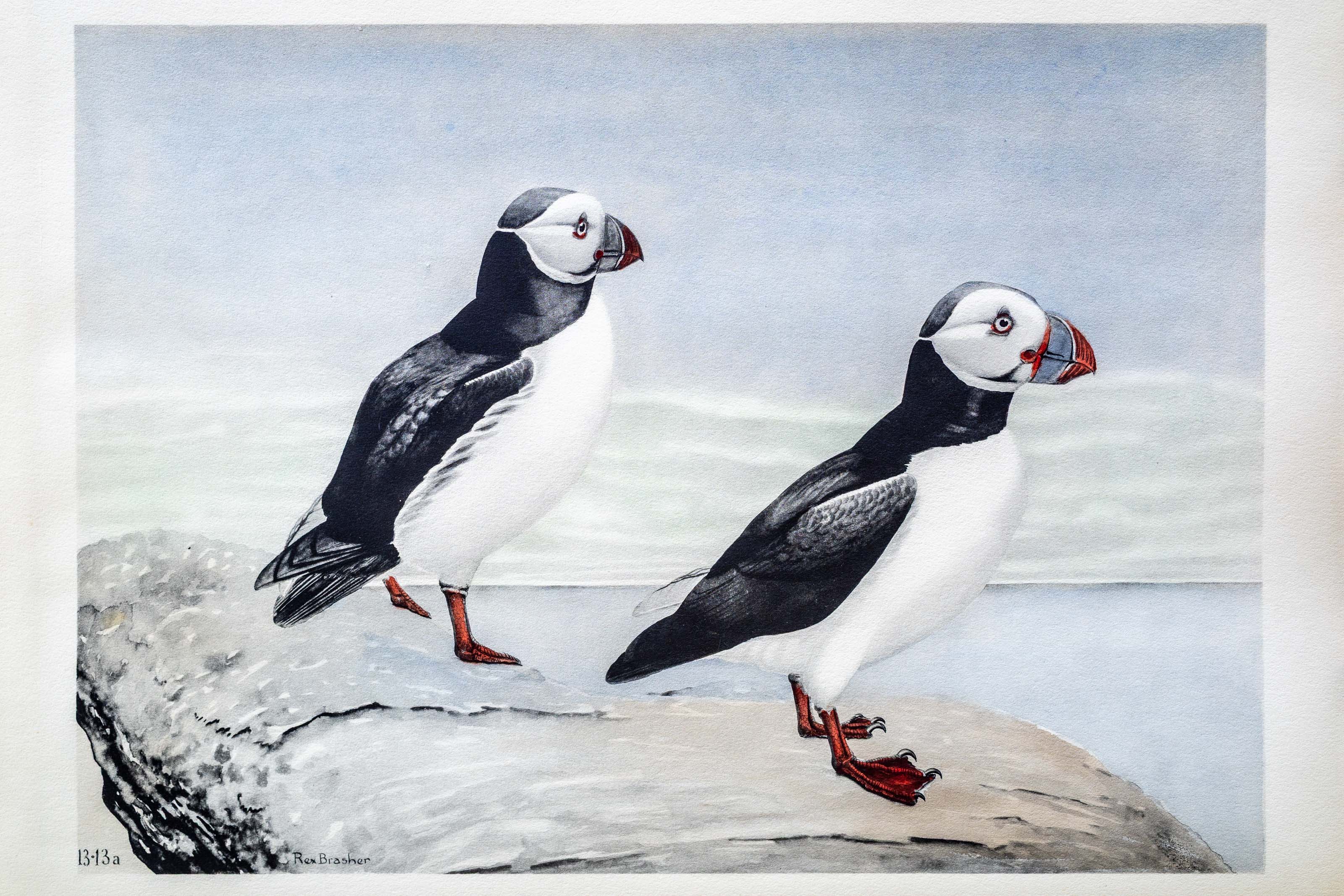
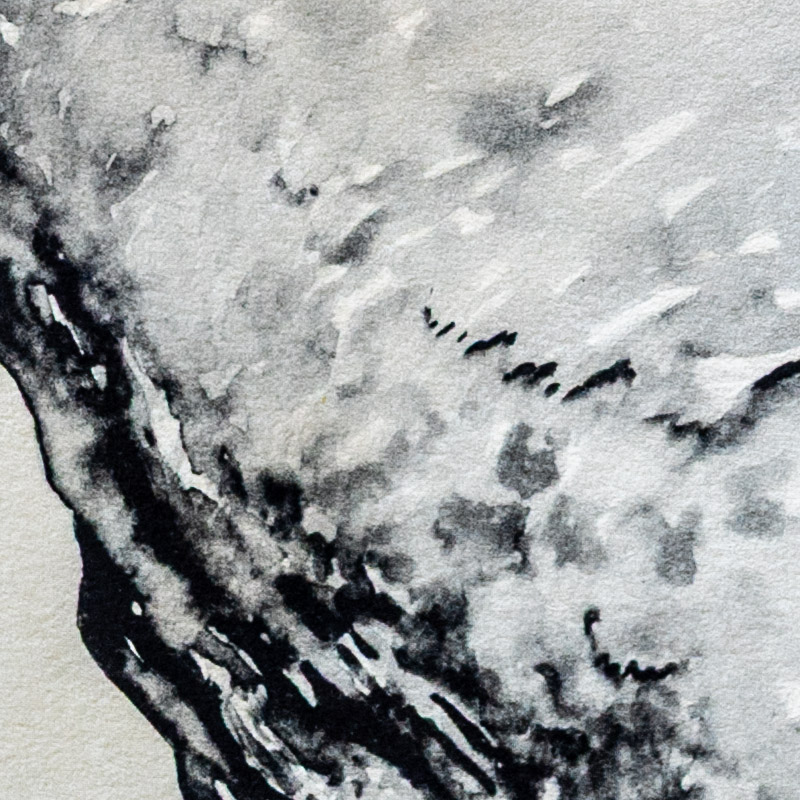
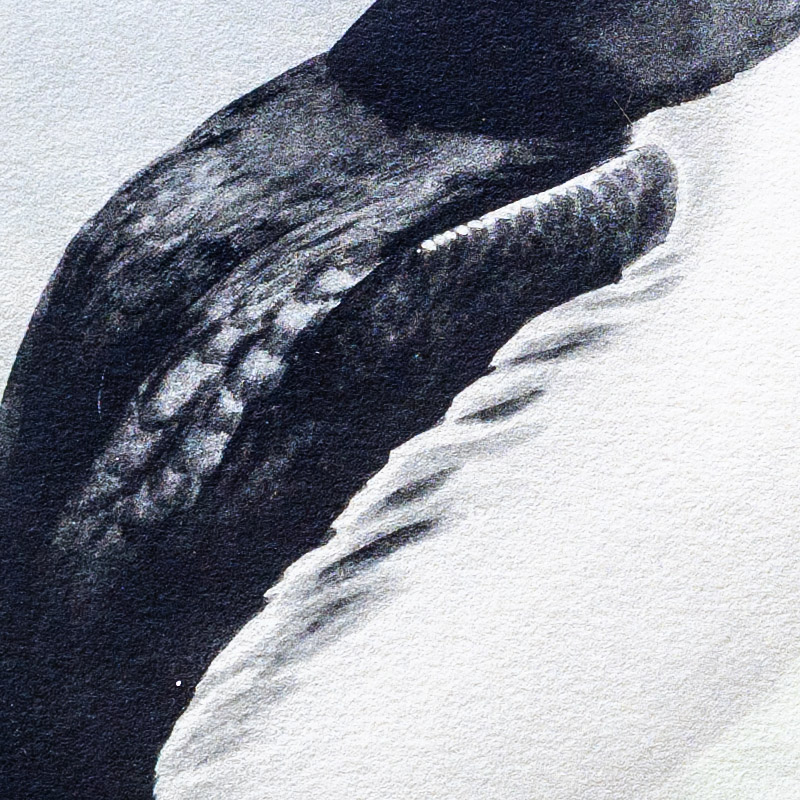
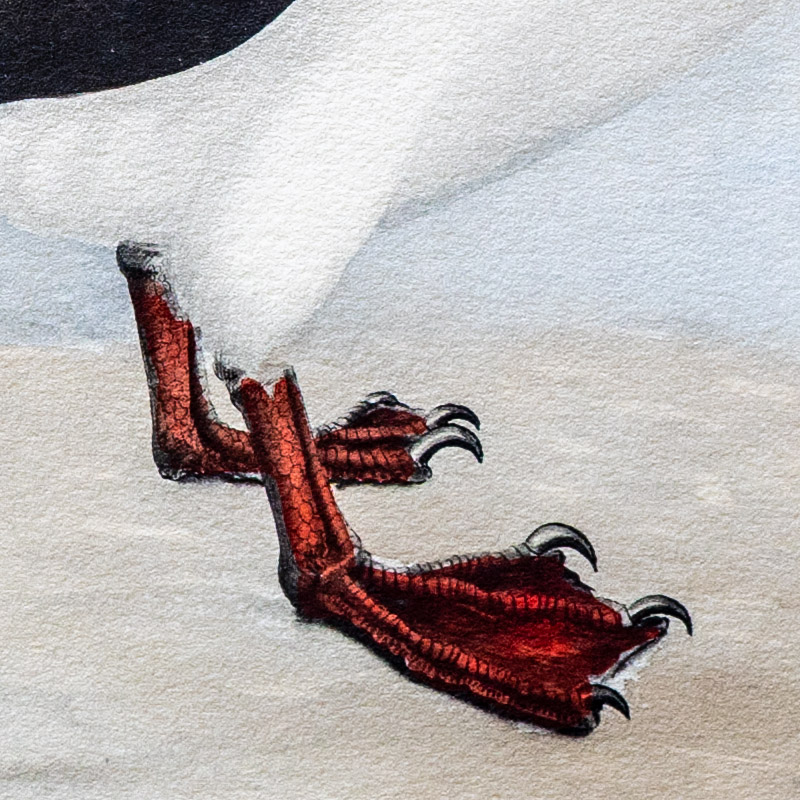
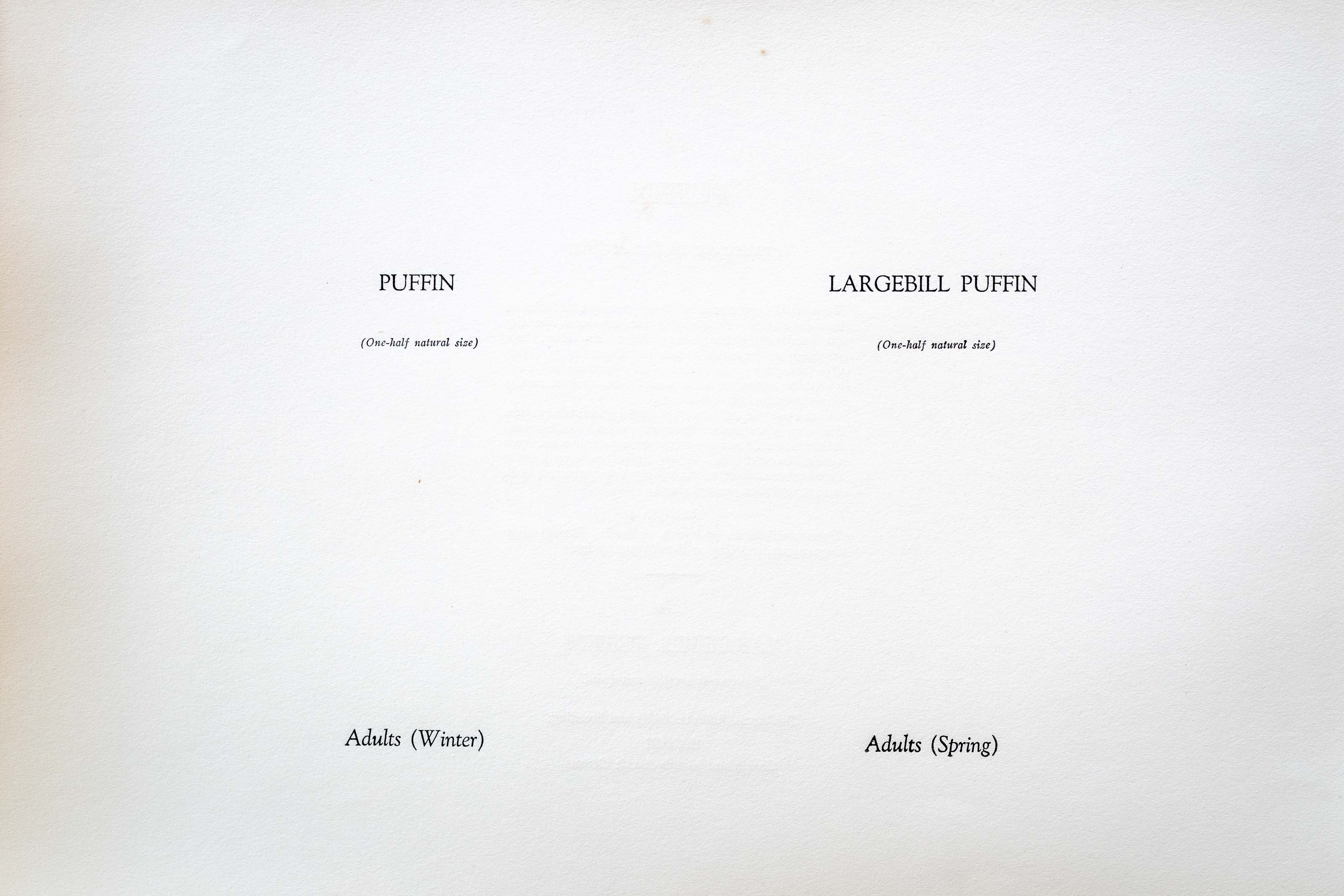
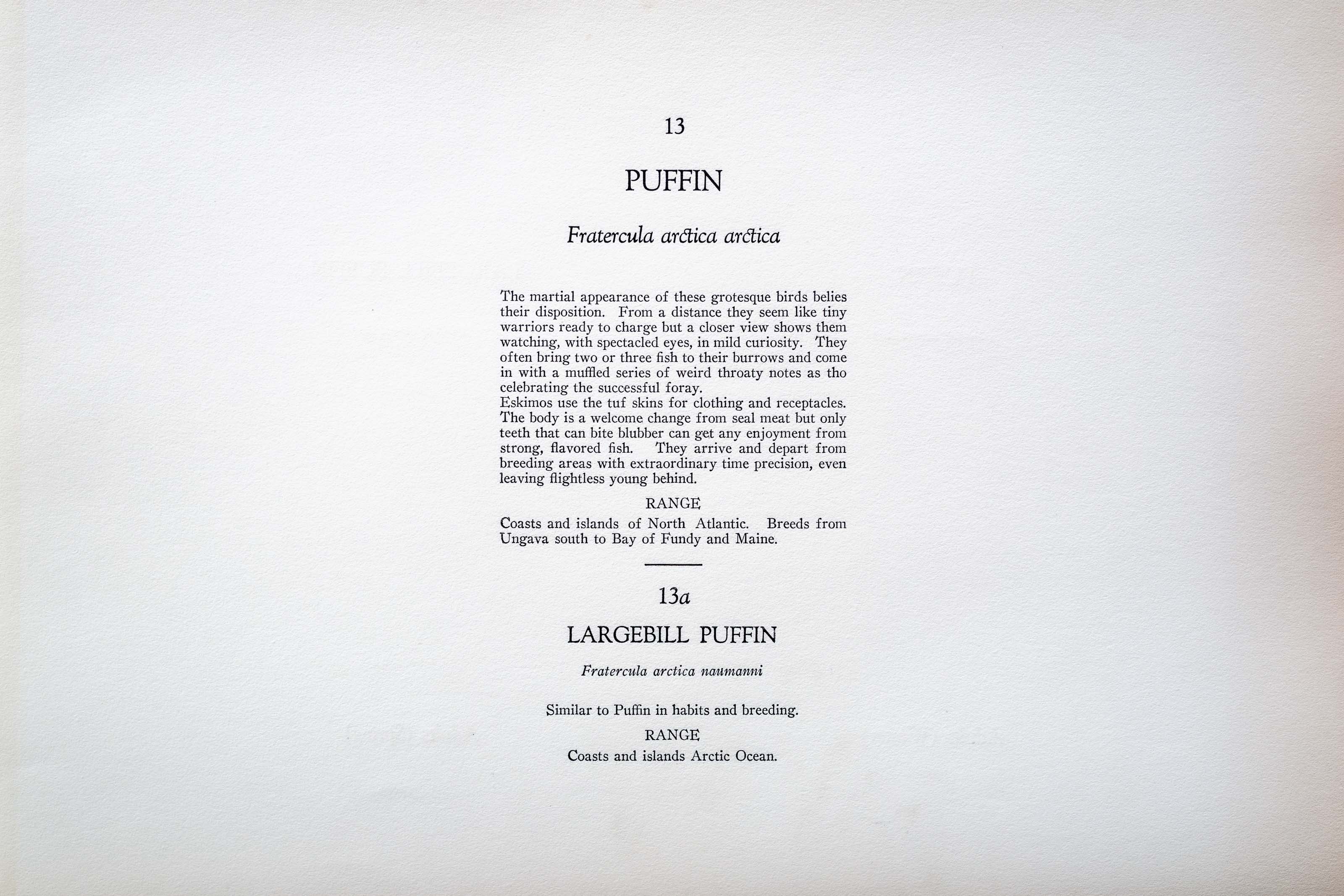

Unknown
1932
1
13-13a
A team of dedicated board members, volunteers, and student interns has published every page in Volume 9. This volume includes 360 images of paintings and lyrical descriptions of birds, now available online for everyone to enjoy anywhere in the world. This is a monumental task. Each volume requires approximately 400 hours to photograph, edit, transcribe, catalog, and publish online. We need your support to complete this work.
If you're tech-savvy, have a good eye, are meticulous with details, and love structured data, please consider volunteering by emailing us at hello@rexbrasher.org.
We encourage all bird lovers and supporters to consider a monetary donation to support our mission to make Rex's work available for everyone. You can provide a one-time or recurring donation online.
The martial appearance of these grotesque birds belies their disposition. From a distance they seem like tiny warriors ready to charge but a closer view shows them watching, with spectacled eyes, in mild curiosity. They often bring two or three fish to their burrows and come in with a muffled series of weird throaty notes as tho celebrating the successful foray.
Eskimos use the tuf skins for clothing and receptacles. The body is a welcome change from seal meat but only teeth that can bite blubber can get any enjoyment from strong, flavored fish. They arrive and depart from breeding areas with extraordinary time precision, even leaving flightless young behind.
Coasts and islands of North Atlantic. Breeds from Ungava south to Bay of Fundy and Maine.
Similar to Puffin in habits and breeding.
Coasts and islands of Arctic Ocean.